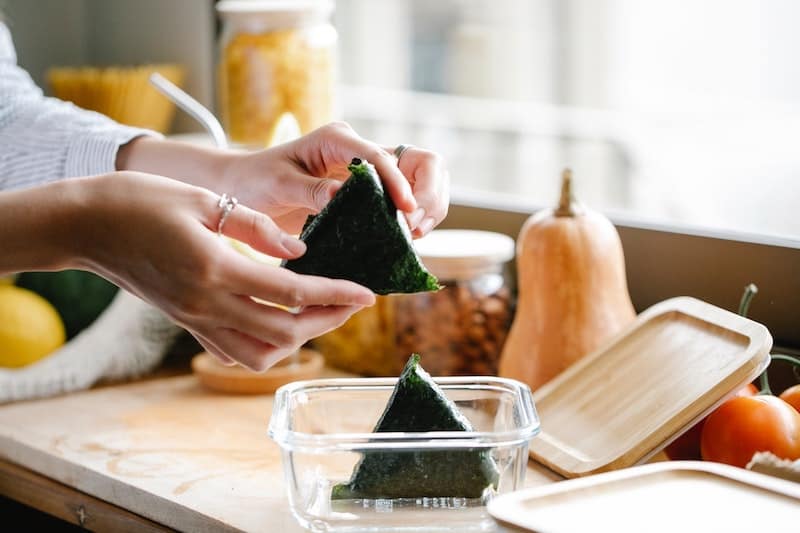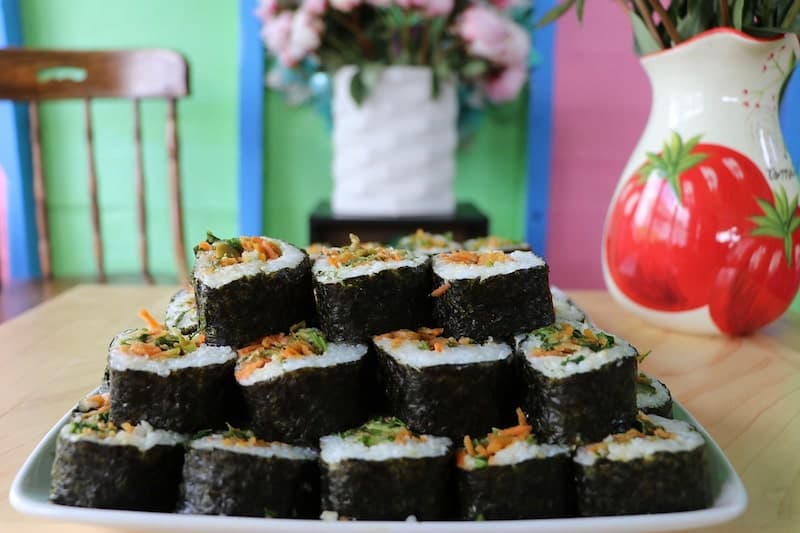What to Do With Leftover Sushi? (Solved!)
Sushi is usually consumed as soon as it’s prepared. Fresh sushi contains plenty of necessary nutritional ingredients and is beneficial to your health.
One problem is that it’s too easy to prepare too many rolls. So the question arises – what to do with leftover sushi. I’m here to share some ideas.
There are many different things that you can do with leftover sushi, including deep frying it to make it crispy, heating up with your microwave, and if you have leftover rice, you can always use that for a variety of purposes too.
In this guide, you’ll find the best tips for making use of leftover sushi. Additionally, I’ll answer the most common questions related to the topic. Read on to find out how to avoid food waste and find new recipes to experiment with.
Turn Sushi Into a Fried Dish
While raw ingredients in sushi may lose texture and flavor or become contaminated over time, frying can solve the issue.
The fried sushi recipe is popular in Europe and was traditionally considered taboo in Japan. However, modern Japanese manga also mentions this method of reviving leftover food.
For instance, the manga Cooking Papa tells a story of a businessman passionate about cooking, and fried sushi is one of his favorite meals.
Simply frying the rolls is possible, though it’s a bit bland. Instead, you can remove the nori and fry the stuffing with rice or add it to noodles. The sauce will help to liven up the taste and create an entirely new dish.
For one of the easiest recipes that can be done in under ten minutes, you need soy sauce, any herbs of your choice, and rice. Any kind of sushi will be a great fit and even better if you have some sashimi.
Here’s how to make it:
- First, place fish in a pan with preheated oil and give it a quick fry.
- Then, pour soy sauce into the pan and simmer for about five minutes.
- You can add seasoning, too – chili, curry, or chopped ginger will add a spicy hint.
- Serve with rice and fresh herbs.
Use Your Microwave to Bring Sushi Back to Life
This life hack of reviving leftover sushi may seem an even bigger sin than frying it. However, sushi that has spent the night in the fridge is ruined anyway.
Frying sushi changes the texture and taste drastically, and while some enjoy the result, others may still prefer the raw flavor.
Place the sushi in the microwave and cook for about 30 seconds at 500 watts. Take it out and enjoy the taste of a freshly made meal. Although the fish may cook slightly, the vegetables and rice will return to room temperature quickly.
Save Leftover Sushi Rice
Often after making sushi at home, some of the sushi rice remains unused. It can later be added to other meals, though you should store it correctly.
First, place it in a metal bowl and cover it with a damp cloth or kitchen towel. Next, wrap it with plastic and put it in the fridge. This will help to preserve the moisture and keep rice soft.
How to Know if Sushi Has Gone Bad
To determine whether your sushi is fresh enough to consume, analyze the smell, texture, and appearance.
For example, a strong fishy smell indicates that your sushi is, well, fishy. On the other hand, fresh fish shouldn’t have a prominent smell.
Don’t rely on just the smell alone, though, as the cold temperature of the fridge can mask it.
Try to gently press the fish with your clean finger. If it springs back, it’s safe to eat. If the fish is muddy and remains squished, it has gone bad.
Finally, aged fish loses its color. If you notice that your sushi has become pale, don’t risk it.
How to Store Sushi
This depends on the ingredients of your sushi.
Raw fish can be stored for up to 24 hours before it goes bad. Vegetarian or fried seafood sushi can be stored for up to about five days, though they’ll lose taste sooner. Afterward, it’s time to say goodbye, period.
Sushi in the fridge must have no contact with air. Tightly cover it with plastic wrap and place it in a sealed container. Ensure that no water is left on the sushi, as bacteria grow faster in humid environments.
Finally, the lower the temperature in your fridge, the better – ideally under 41° Fahrenheit. Keep in mind, though, that freezing sushi may lead to it losing taste. Therefore, you shouldn’t leave sushi unrefrigerated for even a couple of hours.
It’s worth mentioning that sushi may go bad quicker than expected even if you follow all the recommendations. So you should also check the smell, texture, and appearance of sushi before eating it.
Why Is It Bad to Eat Leftover Sushi?
Upon exposure to air and moisture, nori becomes chewy and hard to bite. The rice also changes texture, becoming dry and stiff.
Furthermore, sushi often contains raw fish that may cause contamination if stored for more than a couple of hours. Fish is an excellent incubator for bacteria on its own, and it can be a disaster combined with fridge humidity.
Thus, two-day-old leftover sushi is not only tasteless but also dangerous.
How Does Store-Made Sushi Manage to Stay Fresh for So Long?
You may have noticed that store-made has a longer shelf life than restaurant or homemade sushi. Such sushi is frozen as soon as it’s prepared.
This can prolong the dish’s lifetime at the compromise of taste. Thus, don’t prepare sushi to be frozen and consumed later if you want to enjoy it to the fullest.
In Summary
When choosing what to do with leftover sushi, you should always consider safety first. Ensure the color, texture, and smell haven’t changed before heating it up.
Hopefully, this guide has provided the necessary information on safety measures and offered several ideas on using unconsumed sushi.
After all, provided the food isn’t spoiled, there’s nothing wrong with enjoying it the next day.








